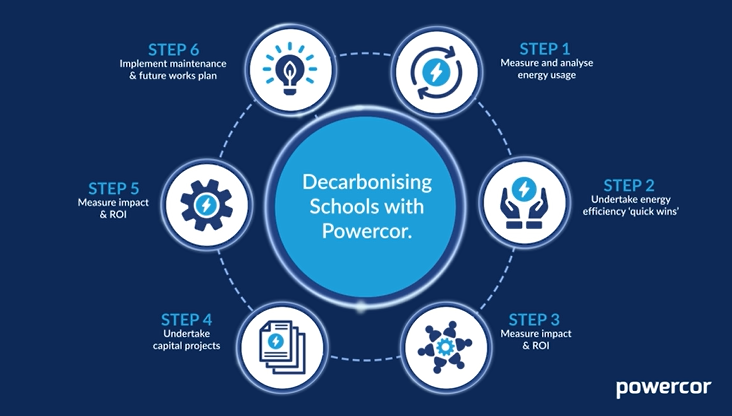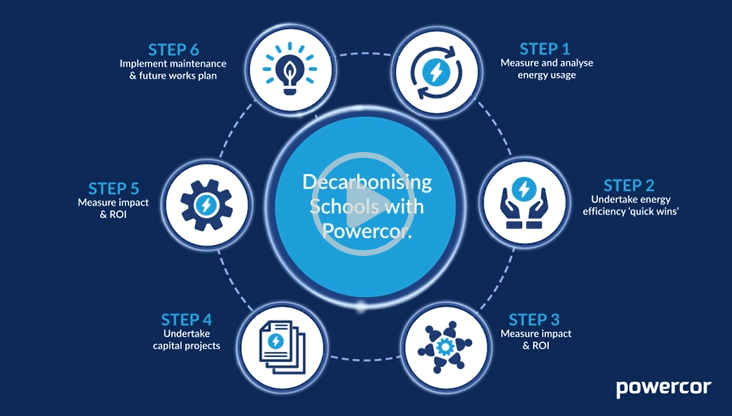With growing pressure to cut carbon emissions and manage budgets more efficiently, energy efficiency in schools has become a top priority. Schools across the UK are actively seeking practical ways to reduce energy use and transition to greener operations. At Powercor, we understand that taking the first step can be the hardest. That’s why we’ve broken down the journey into five clear, achievable stages in our video—each one bringing your school closer to a sustainable future.
Ready to start your school’s decarbonisation journey? Watch our video or read more below to see how each step contributes to improving energy efficiency in schools and helps build a cleaner, smarter, and more sustainable campus.
Step One – Measure and Analyse Energy Usage
The first step is to understand how energy is being used across the school. By installing smart meters and conducting detailed energy audits, schools can gain valuable insights into where energy is being consumed and where the biggest inefficiencies lie. This data becomes the foundation for all future decisions and supports long-term planning around energy efficiency in schools.
Step Two – Undertake Energy Efficiency Quick Wins
With the data in hand, the next move is to implement immediate, low-cost changes that deliver rapid results. Our clients often find the data highlights simple issues like energy-inefficient heaters being used in classrooms or old lighting that can be easily changed to LED can make an immediate impact at minimal cost and significantly reduce energy consumption.
Step Three – Measure Impact and ROI
It’s important to quantify the savings and impact of these initial changes. By continuously monitoring usage, schools can demonstrate the return on investment and build a compelling case for further activity. It also helps engage stakeholders—including pupils and staff—by showing [tangible and visual progress in energy efficiency efforts].
Step Four – Undertake Capital Projects
Once the quick wins have been achieved, schools can move on to larger infrastructure projects that drive long-term savings and support decarbonisation goals. This might include installing solar panels and battery storage systems, or implementing comprehensive LED lighting and smart controls projects. These initiatives not only reduce carbon emissions but also protect against rising energy costs, reinforcing the strategic importance of energy efficiency in schools.
Step Five – Implement a Maintenance and Future Works Plan
Sustainability isn’t a one-time effort—it’s an ongoing commitment. Establishing a proactive maintenance plan ensures that energy systems continue to operate at peak efficiency. Schools should also look ahead to future upgrades, making sure their strategy evolves alongside new technologies and environmental standards.
Leading the Way with Energy Efficiency in Schools
At Powercor, we partner with schools to turn energy challenges into opportunities. With our expert team and tailored solutions, we help educational institutions cut costs, reduce emissions, and create learning environments that reflect the values of the future.








